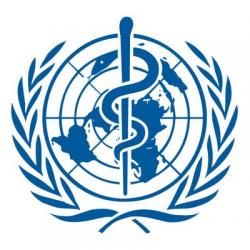20
Mar
Glyphosate Classified Carcinogenic by International Cancer Agency, Group Calls on U.S. to End Herbicide’s Use and Advance Alternatives
(Beyond Pesticides, Washington, DC, March 20, 2015 — A national public health and environmental group, Beyond Pesticides, is calling on the U.S. Environmental Protection Agency (EPA) and the U.S. Department of Agriculture (USDA) to stop the use of the country’s most popular herbicide, glyphosate, in the wake of an international ruling that it causes cancer in humans. The International Agency for Research on Cancer (IARC) released its finding today concluding that there is sufficient evidence of carcinogenicity based on laboratory studies.
 Glyphosate, produced and sold as Roundup by Monsanto, is touted as a “low toxicity” chemical and “safer” than other chemicals by EPA and industry and is widely used in food production and on lawns, gardens, parks, and children’s playing fields. However, IARC’s new classification of glyphosate as a Group 2A “probable” carcinogen finds that glyphosate is anything but safe. According to IARC, Group 2A means that the chemical is probably carcinogenic to humans based on sufficient evidence of carcinogenicity in experimental animals. The agency considered the findings from an EPA Scientific Advisory Panel report, along with several recent studies in making its conclusion. The agency also notes that glyphosate caused DNA and chromosomal damage in human cells. Further, epidemiologic studies have found that exposure to glyphosate is significantly associated with an increased risk of non-Hodgkin’s Lymphoma (NHL).
Glyphosate, produced and sold as Roundup by Monsanto, is touted as a “low toxicity” chemical and “safer” than other chemicals by EPA and industry and is widely used in food production and on lawns, gardens, parks, and children’s playing fields. However, IARC’s new classification of glyphosate as a Group 2A “probable” carcinogen finds that glyphosate is anything but safe. According to IARC, Group 2A means that the chemical is probably carcinogenic to humans based on sufficient evidence of carcinogenicity in experimental animals. The agency considered the findings from an EPA Scientific Advisory Panel report, along with several recent studies in making its conclusion. The agency also notes that glyphosate caused DNA and chromosomal damage in human cells. Further, epidemiologic studies have found that exposure to glyphosate is significantly associated with an increased risk of non-Hodgkin’s Lymphoma (NHL).
“With the cancer classification on top of the documented weed resistance to glyphosate and water contamination resulting from its use, continued reliance on glyphosate is irresponsible from a public health and environmental perspective,” said Jay Feldman, executive director of Beyond Pesticides. “We have effective sustainable organic management systems that do not utilize glyphosate and it’s time that EPA and USDA recognized its responsibility to move away from hazardous and unnecessary pesticides,” he continued.
Ironically, EPA in 1985 originally classified glyphosate as ”˜possibly carcinogenic to humans’ based on tumors in laboratory animals, but changed its classification to evidence of non-carcinogenicity in human years later, most likely due to industry influence, allowing the chemical to be the most widely used pesticide in the U.S. USDA has contributed to its growth by deregulating crops, including the vast majority of corn and soybeans, that are genetically engineered to be tolerant to the chemical. In recent years, weeds have exhibited resistance to glyphosate and its efficacy has been called into question. Additionally, the U.S. Geological Survey (USGS) routinely finds glyphosate in U.S. waterways especially in the Midwestern states and the Mississippi River valley. Ecological data also reports that glyphosate and glyphosate formulated products are toxic to aquatic organisms, and is extremely lethal to amphibians.
But the U.S. regulatory agencies have ignored questions about its hazards and its necessity in crop production. Last year, cotton growers applied for an emergency exemption for the use of propazine on three million acres of cotton because glyphosate was no longer effective. Now that IARC has classified the world’s most widely used herbicide as a probable human carcinogen, EPA must quickly reevaluate its widespread use and registration status.
In addition to glyphosate, IARC also reviewed four other organophosphate herbicides, including malathion, diazinon, tetrachlorvinphos, and parathion. Malathion and diazinion were also classified as “probably carcinogenic to humans.”
All unattributed positions and opinions in this piece are those of Beyond Pesticides.











Finally!!! It’s so easy to find ways to make effective herbicides at home without using any toxic chemicals, plus it’s a whole lot cheaper than using any commercially available products.
March 21st, 2015 at 5:16 pmLet’s stop killing bees, birds and humans with unsafe pesticides. Monsanto become truly ehtical.
March 11th, 2016 at 1:00 am